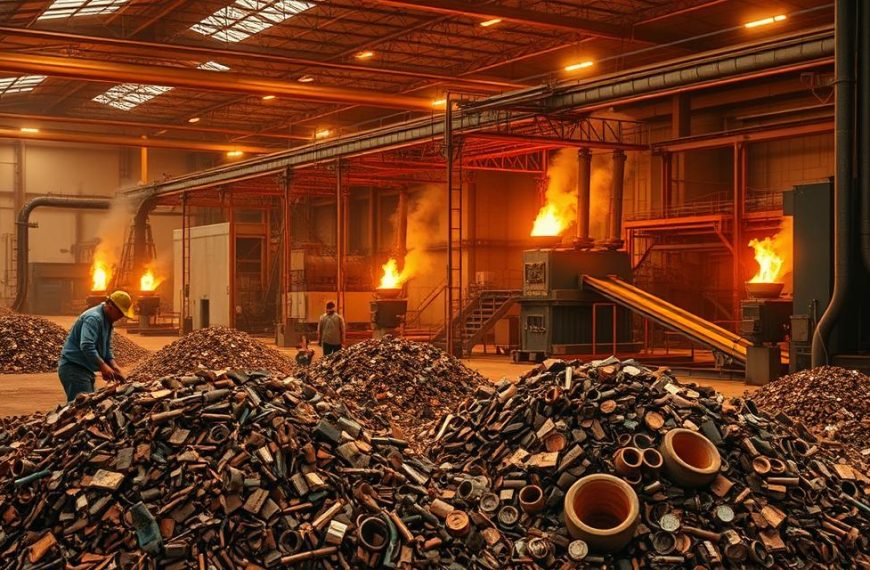Every year, over 350 million magazines are printed in the U.S., creating a significant environmental challenge. With only a 20% recycling rate, there’s a growing need to address this issue. Recycling just one ton of paper saves approximately 17 trees, making it a crucial step toward sustainability.
Magazines, often made from paper and cardboard, can be processed through EPA-approved recycling methods. However, concerns about glossy coatings and binding materials often arise. These materials are typically handled in modern recycling facilities, ensuring they don’t end up in landfills.
Beyond traditional recycling, creative reuse offers innovative ways to repurpose old magazines. Organizations like Better World Books and Little Free Libraries provide platforms for sharing and reusing these materials. State-specific regulations in PA, NJ, and DC also mandate paper recycling, further encouraging responsible disposal.
Whether through curbside programs, drop-off locations, or DIY projects, there are numerous solutions to manage old magazines effectively. By embracing both recycling and reuse, we can reduce waste and contribute to a greener future.
Are Magazines Recyclable?
The recyclability of magazines depends on their composition and materials. Most are made of paper, with a mix of virgin wood pulp and recycled fibers. This combination makes them suitable for recycling, but other components like adhesives and coatings can complicate the process.
What Are Magazines Made Of?
Magazines are primarily composed of paper, accounting for about 90% of their structure. The remaining 10% includes adhesives and coatings. These coatings often use clay or plastic to create the glossy finish seen on many pages. Soy-based inks are the industry standard, making them eco-friendly.
Yellowed pages result from lignin oxidation, a natural process in wood-based materials. Unlike office paper, magazine paper has a lower tolerance for high-temperature pulping, typically around 450°F. This difference requires specialized handling in recycling facilities.
Glossy Paper and Its Impact on Recycling
Glossy coatings, often made of clay, are generally recyclable. However, some magazines use polyethylene coatings, which require special handling. These exceptions are processed separately to ensure they don’t contaminate other mixed paper streams.
Recycling facilities follow standards like ASTM D6868 for compostable coatings. Paper fibers can be recycled 5-7 times before they degrade, making magazine paper a valuable resource. By understanding these details, we can ensure magazines are recycled effectively.
How to Prepare Magazines for Recycling
Proper preparation ensures magazines are ready for recycling. Contamination is a major issue, with a 38% contamination rate in curbside paper recycling. Removing non-paper items and handling staples or glue correctly can make a significant difference.
Removing Non-Paper Materials
Start by removing any non-paper items. These include perfume strips, PVC samples, and polybags. These plastic materials can create residue during the pulping process, accounting for 2.3% of the total residue. Ensure covers, inserts, and labels are also removed.
Follow guidelines like those from Hennepin County, MN, to ensure all non-paper items are separated. This step helps maintain the quality of the mixed paper stream and reduces contamination.
Handling Staples and Glue
Staples and glue are common in magazines but can be managed effectively. Staples are removed using magnetic separators during the recycling process. For glue, look for NSF/ANSI 457 certification, which ensures biodegradability.
Avoid water-damaged magazines, as moisture can affect the recycling process. Use the FEMA moisture scale to assess damage levels. Proper preparation takes about 8 minutes, compared to the 3 months it takes for magazines to decompose in landfills.
| Preparation Step | Time Required | Impact |
|---|---|---|
| Remove non-paper items | 3 minutes | Reduces contamination |
| Handle staples and glue | 2 minutes | Ensures smooth processing |
| Check for water damage | 3 minutes | Prevents recycling issues |
By following these steps, magazines can be efficiently prepared for recycling, contributing to a cleaner environment and reduced waste.
Check Local Recycling Guidelines
Local recycling guidelines vary widely across the U.S., making it essential to stay informed. With 73% of households having access to curbside recycling, understanding your area’s rules can ensure your efforts are effective. Programs differ by city, so it’s crucial to know what’s accepted in your recycling bin.
Understanding Curbside Recycling Programs
Curbside recycling is a convenient option for many households. However, systems vary between single-stream and dual-stream. Single-stream allows all recyclables to be placed in one box, while dual-stream requires separating paper and cardboard from other materials.
For example, Minneapolis mandates separated mixed paper, while Phoenix accepts magazines with junk mail. Always check your local program’s specifications to avoid contamination.
Special Rules for Mixed Paper Recycling
Mixed paper recycling has specific requirements. ISRI Grade 54 standards ensure quality, but exceptions exist. Plastic-coated issues, like some National Geographic editions, often require special handling.
Weight limits also apply. In Chicago, containers must not exceed 40 lbs. Use tools like Recycle Technologies’ ZIP code lookup to confirm local rules.
- Interactive map of state-by-state regulations
- Compare single-stream vs. dual-stream systems
- Highlight exceptions: Plastic-coated issues
- Detail weight limits: 40 lbs/container max in Chicago
By following these guidelines, you can ensure your recycling efforts are compliant and effective. Always stay updated with local rules to contribute to a cleaner environment.
Where Do You Recycle Magazines?
Many convenient options exist for responsibly disposing of used magazines. Whether through local recycling centers or retail drop-off locations, these solutions ensure paper products are processed correctly. Proper disposal helps reduce waste and supports environmental sustainability.
Local Recycling Centers
Local recycling centers are a reliable option for handling mixed paper items like magazines. Facilities such as Recycle Technologies in WI/MN specialize in processing these materials. They follow ERP certification standards, ensuring secure and efficient recycling.
Seasonal collections and specific hours may apply, so it’s best to check local guidelines. Success metrics, like Eco-Cycle’s 82% diversion rate, highlight the effectiveness of these centers.
Retail Drop-Off Locations
Retailers like Staples, UPS Store, and Office Depot offer accessible drop-off points. Staples’ 950+ locations accept magazines, while UPS Store provides shredding services at 6,300+ sites. Best Buy also has a limited program for paper products.
Fees vary, with some services charging $1 per pound, while others are free. Always confirm details before visiting to ensure compliance with local rules.
| Location | Services | Fees |
|---|---|---|
| Staples | Magazine drop-off | Free |
| UPS Store | Shredding services | $1/lb |
| Best Buy | Limited paper recycling | Free |
By utilizing these options, you can ensure your magazines are recycled responsibly. Always check for updates on hours, fees, and accepted items to make the process seamless.
Reuse Before You Recycle
Reusing old magazines offers creative and practical solutions before they head to recycling centers. From donating to libraries to crafting unique home decor, there are countless ways to give these products a second life. This approach not only reduces waste but also supports communities and sparks creativity.
Donating to Libraries and Schools
Libraries and schools are excellent recipients for old magazines. Organizations like MagLiteracy serve over 300,000 low-income readers annually, providing access to educational and entertaining content. Schools also benefit, with 68% of art teachers using magazines for projects.
Other donation options include VA hospitals, Amtrak lounges, and local community centers. Rare editions, like 1990s Sports Illustrated, can even hold monetary value, with some fetching up to $45. Always check ISBN guidelines for rare issues to ensure they’re donated appropriately.
DIY Projects with Old Magazines
Old magazines can be transformed into stunning home decor and functional items. Popular DIY projects include decoupage, where magazine pages are glued onto surfaces using non-toxic Mod Podge. This technique is perfect for creating unique wrapping paper or decorative trays.
Etsy trends show that magazine wall art sells over 1,200 pieces monthly. Safety is key when cutting pages, so always use proper tools and techniques. For those looking to exchange materials, platforms like Freecycle.org connect users locally.
| DIY Project | Materials Needed | Time Required |
|---|---|---|
| Decoupage Tray | Magazine pages, Mod Podge, tray | 1 hour |
| Wrapping Paper | Magazine pages, tape | 30 minutes |
| Wall Art | Magazine pages, frame, glue | 2 hours |
By exploring these ways to reuse magazines, you can reduce waste while adding creativity to your life. Whether donating or crafting, every effort contributes to a more sustainable future.
The Recycling Process Explained
The journey of recycling old magazines involves a detailed and efficient process. From collection to transformation into new products, each step ensures that valuable paper fibers are reused effectively. This process not only conserves resources but also reduces environmental impact.
Sorting and Pulping
Magazines are first sorted at Material Recovery Facilities (MRFs). Here, they are separated from other materials like plastic and metals. Once sorted, they move to pulping machines, such as Andritz pulpers, which can process up to 100 tons per day.
During pulping, magazines are mixed with water and chemicals to break them down into fibers. This stage removes 98.5% of glue and adhesives, ensuring clean pulp for further processing.
Cleaning and Processing
After pulping, the mixture undergoes a 7-stage filtration process, like the one used at Pratt Mills. Flotation cells are employed to remove ink, while mechanical and chemical methods refine the fibers.
Effluent Guidelines ensure that discharged water meets environmental standards. The cleaned pulp is then rolled and dried, ready to be transformed into new products like tissue paper or egg cartons.
“Each ton of paper recycled saves 17 trees, 4,000 kWh of energy, and 7,000 gallons of water.”
| Stage | Process | Output |
|---|---|---|
| Sorting | Separation at MRFs | Clean magazines |
| Pulping | Breaking down with water | Paper fibers |
| Cleaning | Filtration and de-inking | Refined pulp |
For more details on the recycling process for books and magazines, visit our comprehensive guide. By understanding these steps, we can contribute to a more sustainable future.
Environmental Benefits of Recycling Magazines
Recycling old magazines significantly impacts the environment by conserving resources and reducing waste. Every ton of paper products recycled saves 17 trees, 7,000 gallons of water, and reduces landfill space by 3.3 cubic yards. These benefits highlight the importance of responsible disposal.
Resource Conservation
Recycling magazines helps conserve natural resources like wood and water. Virgin paper production requires cutting down trees and consuming large amounts of energy. In contrast, recycling uses 40% less energy and preserves forests. For example, recycling 50 magazines can save one tree.
The EPA’s Waste Reduction Model (WARM) shows that recycling one ton of paper products reduces greenhouse gas emissions by 1.9 MTCO2e. This reduction is equivalent to taking a car off the road for six months. Green Seal certified products further ensure sustainable practices.
Reducing Landfill Waste
Landfills are a major source of methane, a potent greenhouse gas. Recycling magazines diverts them from landfills, reducing methane emissions. Each ton of recycled cardboard and paper materials saves 3.3 cubic yards of landfill space.
Methane capture systems in landfills are less effective than recycling. By choosing to recycle, individuals contribute to a cleaner environment. Recycle Technologies’ annual sustainability report highlights a 12% increase in paper recycling rates, showcasing progress in waste reduction.
| Benefit | Impact | Equivalent |
|---|---|---|
| Tree Conservation | 17 trees saved per ton | 50 magazines = 1 tree |
| Water Savings | 7,000 gallons saved per ton | Enough for 60 showers |
| Landfill Space | 3.3 cubic yards saved per ton | Reduces methane emissions |
By recycling magazines, we protect natural resources, reduce landfill waste, and support a sustainable future. Small actions, like proper disposal, create a significant positive impact on the environment.
Conclusion
By increasing the recycling rate of magazines from 20% to 50%, we can make a substantial environmental impact. Recycle Technologies plays a vital role in the circular economy, ensuring these paper products are processed efficiently.
Take immediate action: remove non-paper samples, check Earth911 for local guidelines, and donate to libraries or schools. Download the EPA’s “Reduce, Reuse, Recycle” app for more tips. Our goal is to recycle 11 million magazines daily, reducing waste and conserving resources.
For bulk recycling needs, contact Recycle Technologies. Together, we can create a greener future by embracing sustainable ways to manage old paper items. Small steps lead to big changes—start today!



















